Today was something I've been looking forward to seeing for years, literally: the Tower of London. The Tower contains more history than you could ever imagine and is full of both stories and ghosts. Unfortunately, I didn't see at ghosts, but I do have some stories to share with you today. So sit back, and enjoy some history lessons.
Alright, first a little bit of history about the Tower of London. It was founded in the latter half of 1066 (the year the Normans invaded, the last invasion of Britain). In 1078, the White Tower was built by William the Conqueror, and it was seen as a symbol of oppression by the inhabitants. Expansions were made under Richard the Lionhearted, Henry III and Edward I in the 12th and 13th centuries. Until 1100 it was used as a prison, and it was also used as a menagerie until the formation of the zoo, a treasure, an armory, home to the Royal Mint, a public records office and home to the Crown Jewels. It was also a royal residence, but that became a less frequent occurrence under the Tudors (Elizabeth I HATED it there, it may have to do with the fact that her mother was executed there, but I'm just speculating...). It is still considered a "palace," just like Kensington, Kew and Buckingham.
So I'm going to appear to jump around a lot with my pictures, and I apologize for that. This is Traitors Gate. It was through this gate that Anne Boleyn rode after her arrest. She entered the Tower but never left again, her body is buried here as well. Upon her arrival, she asked "Shall I go into a dungeon?" She was answered, "No madam, you shall go into the lodging you lay in at your coronation." Talk about a slap in the face, Anne was probably stunned. You can also see this gate from the Thames River.
This is Bell Tower. The Thames River used to come right up to the tower, but it's since been pushed back and held away by another wall. At the top of the tower, Sir Thomas More was imprisoned, and on the bottom, Bishop John Fisher was imprisoned, both for refusing to swear that Henry VIII was the Supreme Head of the Church of England. Both were eventually executed, and on May 19, 1935 by Pope Pius XI.
This archway on the left hand side is the other way Anne Boleyn entered the Tower. She came here in 1533 before her coronation (as was tradition at the time). Henry met her at this gate, got down on one knee and proclaimed his love to her until his dying day. That didn't work out so well, since Anne lost everything from the neck up in 1536 at the hand of a French swordsman from Calais, but more on that in a little bit.
Alright, you see those three white windows? That is where Guy Fawkes was imprisoned after the botched Gunpowder Plot (you know, November 5th, when everyone posts as a Facebook status, "Remember, remember the fifth of November," well, that's where it came from). The main gist of the plot is Fawkes found himself entangled with a Catholic organization, and they planned to blow up the House of Lords when it opened on November 5, 1605. Now, King James I of England VI of Scotland (he took the throne after Elizabeth I) was King of England, and a Protestant. Fawkes and his comrades wanted to assassinate him and his ministers so his daughter, a Catholic, would take the throne. An anonymous letter was sent to William Parker, a baron, on October 26, 1605. The House of Lords was searched around midnight on November 4th, and Fawkes was discovered with roughly 36 barrels of gunpowder, more than enough to completely destroy the House of Lords. Well, needless to say, Fawkes and his conspirators were promptly arrested. He was tortured mercilessly on the rack (which, according to our Yeoman tour guide made small men tall, so Fawkes was "19 feet tall when he confessed," which I thought was a funny twist on the story) until he was such a broken man that he gave a full confession to his actions. Fawkes was hanged, drawn and quartered on January 16, 1606. Today, they celebrate Guy Fawkes Day here in England on November 5th, and they set off fireworks and build effigies to burn of Fawkes (and apparently other hated British figures such as Margaret Thatcher).
St. Peter ad Vincula Chapel (St. Peter in Chains Chapel). This is where executed "residents" of the Tower were buried. When the chapel was renovated under Victoria, the bodies that could be identified were given a proper burial within the chapel with a plaque to show where they are buried. Under this altar is four VERY important Tudor-era women. First, on the left hand side are Anne Boleyn and Kathryn Howard.
Anne Boleyn, the second wife of Henry VIII. They married in 1533, and she produced only one living child, a daughter who went on to become Queen Elizabeth I. Anne was the reason Henry broke with the Catholic Church (I wrote a 15 page paper on this, so I'm gonna spare you and not even go into that, you want to know more, just Google it). She quickly fell out of favor with the King when she failed to produce a living male heir (they had a daughter, but she didn't count even though she's one of the best monarchs in English history). The miscarriage of a male fetus in January of 1536 was the last straw for Henry, who now claimed Anne seduced him with witchcraft. She was promptly arrested on charges of adultery, incest and witchcraft, amongst others. It didn't matter that the evidence against her was basically non-existent, she was found guilty (along with her brother, George, and five other men), and sentenced to death. Anne was executed by a French swordsman on May 17, 1536. She'd come to terms with her fate and said to the guard at the Tower, "I heard say the executioner was very good, and I have a little neck." It was a clean stroke, so quick that Anne's lips and eyes were still moving when the executioner picked up her head to show the crowd she was in fact dead.
Now, like I said before, Anne was taken back to the Tower of London and kept here, at the Queen's house, where she stayed before her coronation. Some Yeoman guy lives there now, so you can't go in, and I was utterly heartbroken to find that out. The nice Yeoman pointed it out to me though, and this is as close as I'm going to get. Her ghost apparently haunts there though, with her head tucked under her arm.
Alright, back to the chapel and the bodies buried there. Next we have Kathryn Howard. You know you're a history nerd when you have a favorite wife of Henry VIII, and Kathryn Howard is mine. The poor girl, she was only 17 or so when she died in 1540. The year earlier, she'd married Henry VIII, becoming wife number 5. Now, at this point, Henry was fat, lazy and had a festering wound on his leg from a jousting accident that smelled like rotting flesh. I know, he sounds like a wonderful catch! Kathryn was 16, a budding woman and stuck with a husband who could easily be her father. It's no wonder Kathryn took a lover, Thomas Culpepper, with the help of her head lady-in-waiting, Jane Rochford (sister-in-law to Anne Boleyn, she testified against Anne and her brother George a few years earlier). Someone found out and left an anonymous note on Henry's seat at Mass one day. Henry was so devastated he apparently wept when he signed Kathryn's death warrant. Kathryn and Jane were executed (Jane went crazy while imprisoned but a special law was written to have an insane person executed), and Kathryn's buried next to Anne on the left hand side of the photo of the chapel.
Margaret Pole's body is under the flowers in the photo of the chapel. Margaret Pole didn't actually do anything to Henry VIII, but her son, a Catholic Cardinal, was preaching against Henry's break with Rome on the European continent. So, Henry had Margaret, a woman in her 70s, arrested. She definitely didn't go without a fight. When she was lead to the block, she began to run, fleeing the executioner. The executioner proceeded to chase her with his axe, hacking at her until she was dead. Apparently her ghost still reenacts this at night.
Now, I talked about this painting a few weeks ago, but, once again, this is Lady Jane Grey, the Nine Days Queen. She is buried directly under the altar. Long story short, Jane was Henry VIII's great-niece, she was supposed to marry his son, Edward VI, but that didn't work out, so she married the ultimate mama's boy, Guilford Dudley. Her grandparents were Charles Brandon, Duke of Suffolk (if you watch the show The Tudors, the really hot guy) and Henry VIII's sister, Mary Tudor. Well, her father-in-law saw her claim to the throne as the next legitimate one since various laws declared Mary, Henry VIII's oldest child, illegitimate because the marriage between him and Catherine of Aragon was a sin (this goes back to the whole "splitting with Rome" business), and Elizabeth was also illegitimate since Henry had his marriage with Anne Boleyn annulled (and yet she could be executed for adultery in a marriage that never happened, go figure...). So, Jane was apparently next after Edward VI finally kicked the bucket on July 6, 1553 after ruling for a whopping six and a half years. John Dudley, her father-in-law, proclaimed Jane Queen of England, but she didn't want it. Mary showed up nine days later, and wasn't exactly happy that she wasn't Queen of England. She had Jane and Guilford arrested, but had no intentions of executing them, until John Dudley organized a rebellion in their name. Mary knew as long as the two of them were alive, they'd serve as a symbol for Protestant rebellions, so she had them executed on February 12, 1554. This painting shows Jane blind folded looking for the block. In real life, she couldn't find it while blind folded and became visibly upset until someone helped her. Her ghost, along with Guilford's, still haunts the Tower, seen on February 12, the anniversary of her death, although it hasn't been seen in about 50 years.
Alright, enough of that. Above are two sets of armor on display in the Tower belonging to Henry VIII. The one on the horse is from he was much younger. You can tell that because, well, it's made for a thin person. Similarly, the one on the bottom is from later in Henry's life, after the jousting accident left him basically a lump on the throne who ate too much, and you can tell because Henry's fatter, much fatter. Both were impressive to see. They had a wide collection of armor from all sorts of monarchs, including Charles I (you get a sense of how short he really was) and James II.
They also had this, a sword belonging to Oliver Cromwell. Cromwell lead England after they executed Charles I (the only time a reigning monarch had been executed, apparently Anne Boleyn, Kathryn Howard and Jane Grey don't count). Cromwell lead the "Commonwealth of England" during its short existence from 1653-1669. He dismissed the Rump Parliament and established the Barebones Parliament before being asked to become the Lord Protector of England on December 16, 1653. His power was short lived, and he was overthrown in 1658 and executed. His body was buried in Westminster Abbey until Royalists returned to power in 1660, and they dug it up, beheaded it and chained it up for all to see. So that's the English Civil War in about 6 sentences, not bad if I do say so myself.
This executioner's block and axe was used for the last public execution at the Tower, the execution of Simon Fraser. Fraser was a Scottish Jacobite (the whole Bonny Prince Charlie business, I'm not going to go into that), and he was executed in 1746. Now, I find the last name amusing for one reason alone. I'm recently gotten into the Outlander book series by Diana Gabaldon. If you like historical fiction and romance, you'd definitely like this series. So, the last name of the one main character is Fraser, and the series takes place during the Jacobite rebellion. So, go figure. I wonder if that's where she got the inspiration for the last name...
So I haven't covered the story of the Ravens yet. Legend has it, if the raven ever left the Tower of London, the White Tower would crumble and the monarchy (and the kingdom itself) would collapse. Well, after seeing his father lose his head, Charles II was probably a little paranoid about the monarchy losing its grip on the kingdom once again, so he made it a royal decree that ravens be kept permanently at the Tower. There are two new ones, both male, Jubilee (named in honor of the Queen's Diamond Jubilee), and Grip (name for Charles Dickens' pet raven in honor of his anniversary). They're kept in cages but can also fly around a little bit, I imagine their wings are clipped or something to keep them close by.
Remember Jane Grey and her annoying husband, Guilford? Well, Guilford was so distraught when he was imprisoned in the Tower that he carved Jane's name into the stone. There's a room in Beauchamp Tower full of all sorts of graffiti. I almost missed this one, but I asked a Yeoman as he was coming to close up the Tower for the night. He was like, "Oh, it's right upstairs in the window down near the bottom. It's really small." He was trying to make it sound like it was no big deal, but it was a big deal to me! I did a report of Jane Grey in 12th grade, and I mentioned this, and I wanted to see it for myself. Needless to say, I rushed back upstairs and found it, so I was happy and I could leave now.
This absolutely beautiful chapel in the White Tower is St. John's Chapel. Photos weren't allowed inside, so I had to find one online (so this isn't a photo I took). It's absolutely beautiful, and it reminds me of what early Christians in hiding would have used as a church, but on a more sophisticated level. It's all stone and absolutely gorgeous. It is the most complete example of early Anglo-Norman church-related architecture in England, and they do say Mass in there. You simply show up at the Tower, tell them what you're there for and they let you right in, pretty cool, right?
Alright, at this point you may be saying to yourself, "Christina, did you see the Crown Jewels?" Of course I did! Photos weren't allowed though, so below are some photos from Google of the stunning crown jewels on display. Do NOT miss them if you go, it leaves you in awe that these have been worn by monarchs and simply how expensive these must be.
There was also a lot of gold dishes and Mass items from dinners and the Mass that goes along with a coronation. The Jewels weren't as crowded as I thought (when I saw the diamonds at Buckingham Palace it was WAY too crowded, I was feeling really uncomfortable after a while), which was a good thing. I got a chance to really take a look at them and appreciate just how beautiful these are.
So, like I said, we did one of the Yeoman tours, and I'm going to leave you with what our Yeoman said to all the Americans in our group, "All this history could have been yours if you'd only pay your taxes!" I never thought of it like that, and that kind of upsets me since I love this history so much. Oh well, such is life. Until next time.






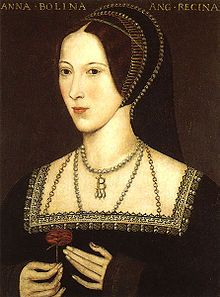

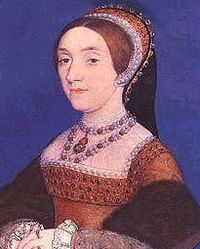

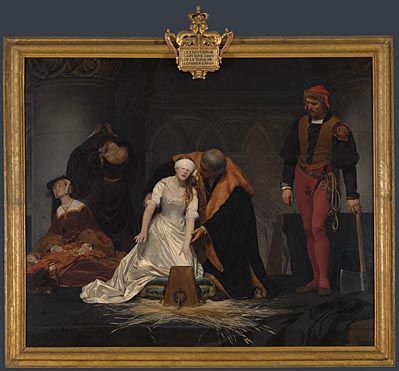







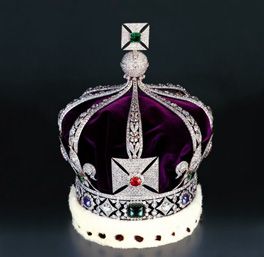

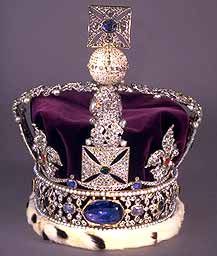
loved this!
ReplyDelete